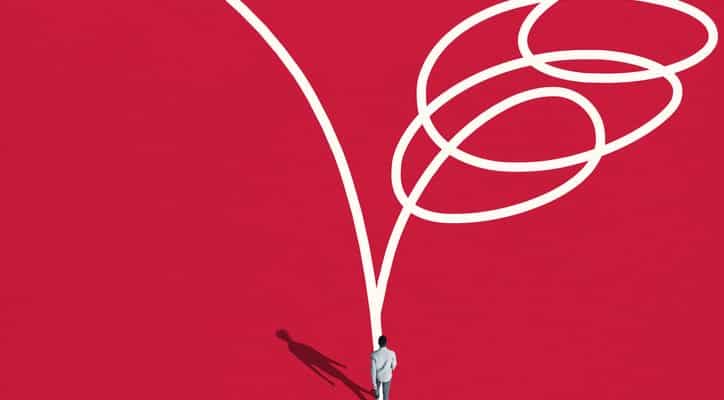A Commentary with Stephen Beaumont
“Don’t believe the hype!”
So screamed Flavor Flav in the 1988 Public Enemy song appropriately titled Don’t Believe the Hype. And it’s a sentiment many brewers might wish to bear in mind as they approach another round of brand and style diversification.
There are a lot of trends happening in beer these days, some with proven legs and likely to endure, and others a little more suspect. The established ones scarcely need rehashing here, since it’s fairly likely that anyone with even a toe in the industry is aware that haze is currently the craze, although maybe, just maybe beginning to lose a little steam, and ‘drink local’ is not only an industry mantra but also a sentiment wholeheartedly embraced by the beer drinking public at large.
On the more controversial side of the trend’s ledger, we have things like hard seltzer and non-alcoholic beer. Yes, I know, hard seltzer is huge right now and everyone from AB InBev to Heineken is saying that non-alc is going to be the next big thing, so how can one possibly suggest that these are anything but sure things, right?
Well, for one, the future for both might not be as rosy as it immediately appears, at least for seltzer brands not named White Claw or Truly; and secondly, I know my recent brewing industry history, that great educator which so many of us choose to either disregard or downplay. In the case of much-hyped style trends in beer, however, ignore history at your peril.
Take, for instance, many of the North American beer trends of the past, beer ‘styles’ like ice, bottled draught, and dry. Each one was predicted to be huge, the wave of the future, and supported by the big breweries to the tune of millions of dollars of production and marketing muscle. But if you look around today, you will see but dusty remnants of their once-glorious existence. Sure Miller Genuine Draft is still with us – in fact, it just got a makeover – and there are certainly still some ice and non-Japanese dry brands kicking around, but none of these are presently industry forces.
And that’s not even mentioning the super-hyped trends that never quite got out of the starting blocks, like clear beer – as in water-pale rather than simply not hazy – and super-low alcohol. (Yes, I am aware the latter category is currently experiencing a resurgence, but it has been with us before and, to be honest, the jury is still out on its viability this time around.) In fact, looking at the last few decades of brewing industry trends, about the only ones that have stuck are the almost polar opposites, which are light beer and craft brewing.
Now, on to present-day trends.
Ever since AB InBev announced that non-alcoholic beer was on course to represent in excess of 20% of the volumes of the world’s largest brewer by 2025, the rest of the global brewing industry has seemingly been in an almighty hurry to prove them right. And in places such as Germany, the largest national market for low- and no-alcohol beer, and certain other parts of the world, such momentum is fairly well established. In the United States, however, even after what market research firm IWSR described as “surging” growth, non-alc’s share of the total beer market stands at a little more than half of one percent.
Even in Germany, the nation pundits regularly point to as evidence of the non-alcoholic category’s strength, the share of market is 11.8%, again according to IWSR, and that number encompasses both non-alcoholic and low alcohol beer, the latter defined as between 0.5% and 3.5% alcohol by volume.
So a word of warning to those seeking to grab even a small piece of the non-alcoholic pie: That pie might be a lot smaller than you think, and it may very well remain that way for some time.
However, no one can reasonably question the size of the hard seltzer pie. It is indisputably large, and while its growth has slowed somewhat in recent months, it is still growing. The question here is how much of it might be available.
It will surprise no one to learn that 75% of the hard seltzer market is controlled by White Claw and Truly. It has been that way since almost the category’s inception and even heavyweights like Bud Light and Corona are having a hard time shifting it. To make matters even more challenging, non-alcoholic drink makers are also hopping on the hard seltzer bandwagon, evidenced by such recent entrants as Coca-Cola’s Topo Chico Hard seltzer, made in partnership with Molson Coors.
So where do smaller breweries find their place?
If anywhere, it seems likely that the niche for craft hard seltzer will reside in the same place as it does for craft beer, specifically as high-end, specialized, niche brands. Emphasis, then, will need to be in areas where some craft brewers are already concentrating, such as premium ingredients, unique attributes, and perhaps even areas like hopped and pastry style seltzers. India pale seltzers, anyone?
Wherever they do wind up, though, bear in mind that with big marketing dollars being spent to crowd the market with a constant barrage of new brands and flavours, counting on consumer curiosity to further grow share and, perhaps, expand the reach of this colossally hyped marketplace. What’s left over to be shared among everyone else might be very tiny indeed.



